The best commuter bike helmets usually have a distinctive skate-style design with a rounded shape that’s quite enclosed relative to the best road bike helmets and the best mountain bike helmets.
With fewer vents, an urban helmet may be more comfortable for stop-start urban riding at lower speeds than on the open road or on the trail. It will be more weatherproof too, so better suited for riding in the rain or winter road cycling.
You’ll usually get added safety features in an urban bike helmet, often including in-built rechargeable LED lights in the shell, which can help make you more visible to other road users.
Here’s our pick of the best urban bike helmets for commuting. Further down the page, you’ll find our buyer’s guide to how to choose the best commuter helmet for you, the features to look out for in an urban bike helmet and how to look after it.
Best commuter helmets in 2024 as rated by our expert testers
Bollé Eco React MIPS

- Price: £140/$200/€160
- Sizes: S, M, L
- Weight: 387g (L)
- Vents: 13
- Protections: MIPS
- Colours: Blue Matte; Dark Green Matte
- Pros: Comfortable; good looking; better for the environment; MIPS
- Cons: More expensive than most commuter helmets
The Eco React MIPS is a superb commuter helmet: it’s good looking, very comfortable and has MIPS for safety.
The fit is easy to adjust thanks to a simple rear cradle with a micro-adjust dial and there are vertical adjustments of a couple of centimetres too.
The MIPS liner doesn't impede the vents and internal channelling, helping the Eco keep your head cool, even on hot summer commutes.
Bollé has included recycled and natural materials in the Eco React's construction.
The fit of our size-large test sample was generous and its 387g weight is reasonable for an urban helmet with this level of protection.
MET Urbex MIPS
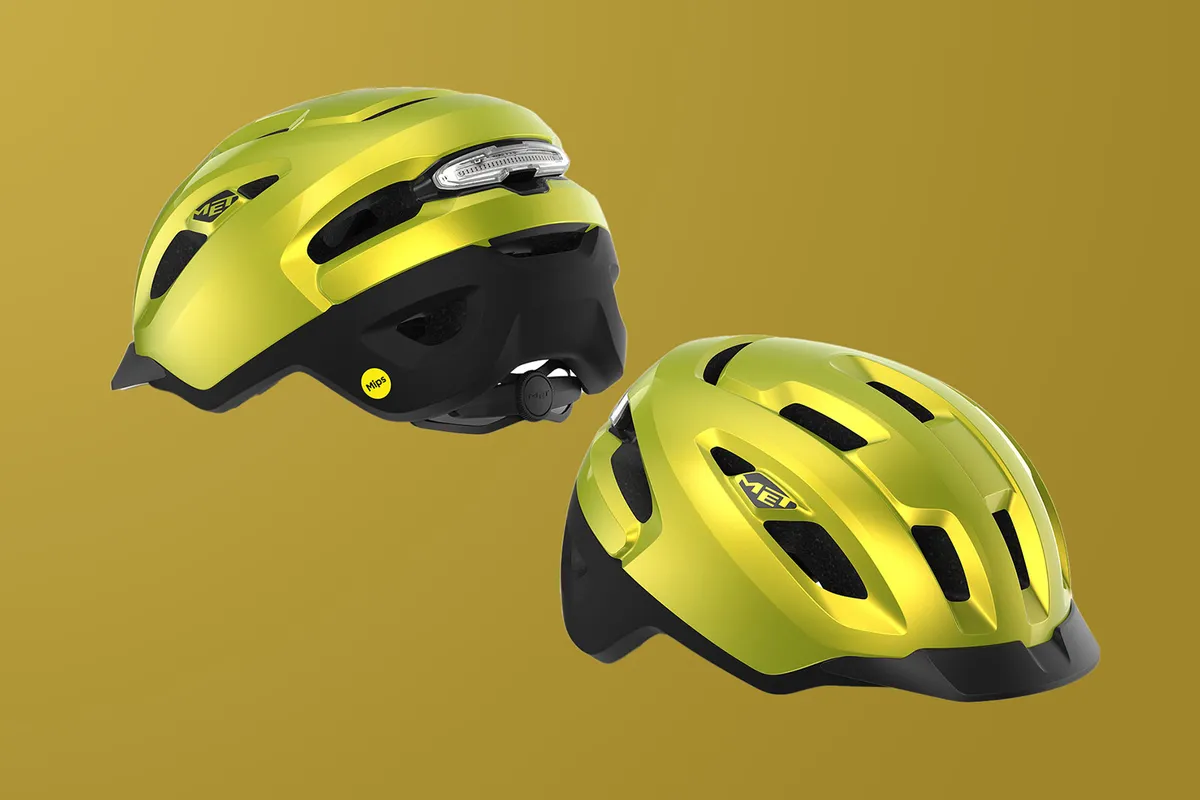
- Price: £160/€200
- Sizes: S, M, L
- Weight: 430g (L)
- Vents: 13
- Colours: Matt finish: Teal Blue Metallic; Titanium Metallic; Black. Glossy finish: Lime Yellow Metallic
- Pros: Tough; increased protection; clip-in light; removable straps
- Cons: More protection means more weight
The Met Urbex MIPS meets the tough safety standard for speedy electric bikes, dissipating more energy than a standard commuter helmet. It also gives more coverage at the rear and has a MIPS slip plane.
With its 10 forward-facing and six exhaust vents, plus internal channelling, our tester benefited from the Met Urbex's ventilation for boisterous gravel riding.
The excellent fit can be adjusted vertically and accommodate ponytails. With removable straps for cleaning, magnetic Fidlock strap closure and a rechargeable rear light, the Met Urbex impresses.
Bern Hudson MIPS

- Price: £110/$140
- Sizes: S, M, L
- Weight: 412.8g (L)
- Vents: 13
- Protection: MIPS
- Colours: Matte Black; Satin White; Matte Sand; Matte Mint; Matte Hi-Viz; Matte Turquoise
- Pros: Fit; protection; comfort
- Cons: Pricey; can get warm
The Bern Hudson is a superb commuter helmet that’s wonderfully comfortable, easy to adjust and built to rigorous electric bike safety standards. It also features MIPS.
The Bern design may be warmer than lighter road helmets, but it's ventilated adequately for cycling to work and more leisurely rides.
Bern has integrated a red LED light into the rear of the helmet. You can also pass your D-lock through the side vents to secure the Hudson when you lock up your bike.
Giro Ethos MIPS
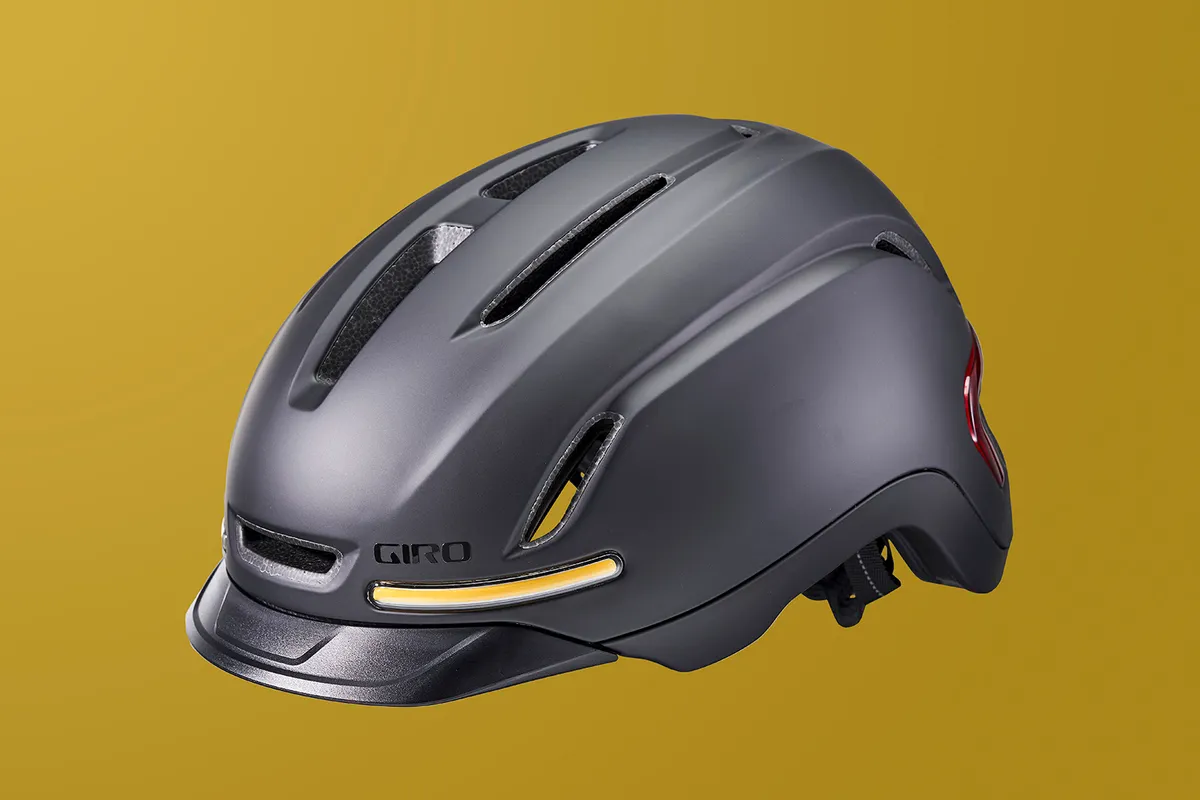
- Price: £240/$250/€275
- Sizes: S, M, L
- Weight: 506.7g (L)
- Vents: 12
- Colours: Matte Black; Matte Chalk; Matte Graphite
- Pros: Super fit; MIPS; lights and remote control work well
- Cons: No remote turn-on; pricey
The Giro Ethos MIPS is a premium commuter helmet with plenty of protection and adjustability.
In-built indicator lights flash amber when you press a Bluetooth-enabled remote on the handlebar. After turning, the Giro Ethos beeps to remind you to turn off the signals, switching the front lights back to white and the rear ones back to red.
Battery life was three hours on Solid mode (high power), including plenty of turns. The lights and the remote control recharge via USB-C cable.
Disappointingly, you cannot turn on the lights from the handlebar and our size-large test helmet weighs a quite hefty 506.7g.
MET Intercity MIPS

- Price: £200/€250
- Sizes: S, M, L
- Weight: 493.6g (L)
- Vents: 16
- Colours: Matt finish: Blue Metallic; Sage Metallic; Titanium Metallic; Black. Glossy finish: Reflective
- Pros: Plenty of fit adjustment; tough; shield is practical
- Cons: The flip-down lens look will put some off
The Met Intercity MIPS has electric bike riders in mind, incorporating more coverage at the back than traditional commuter helmets.
Glasses fit beneath the visor, which usefully protects your eyes whether you're riding an ebike at speed or not.
The Met Intercity MIPS is rated to tougher electric bike safety standards, but weighs a respectable 493.6g in a size Large. The weight includes a removable rear COB LED strip light that runs on solid for nearly five hours.
Met’s rear cradle is vertically and horizontally adjustable. The small internal pads are comfortable and dry quickly.
Nutcase Vio
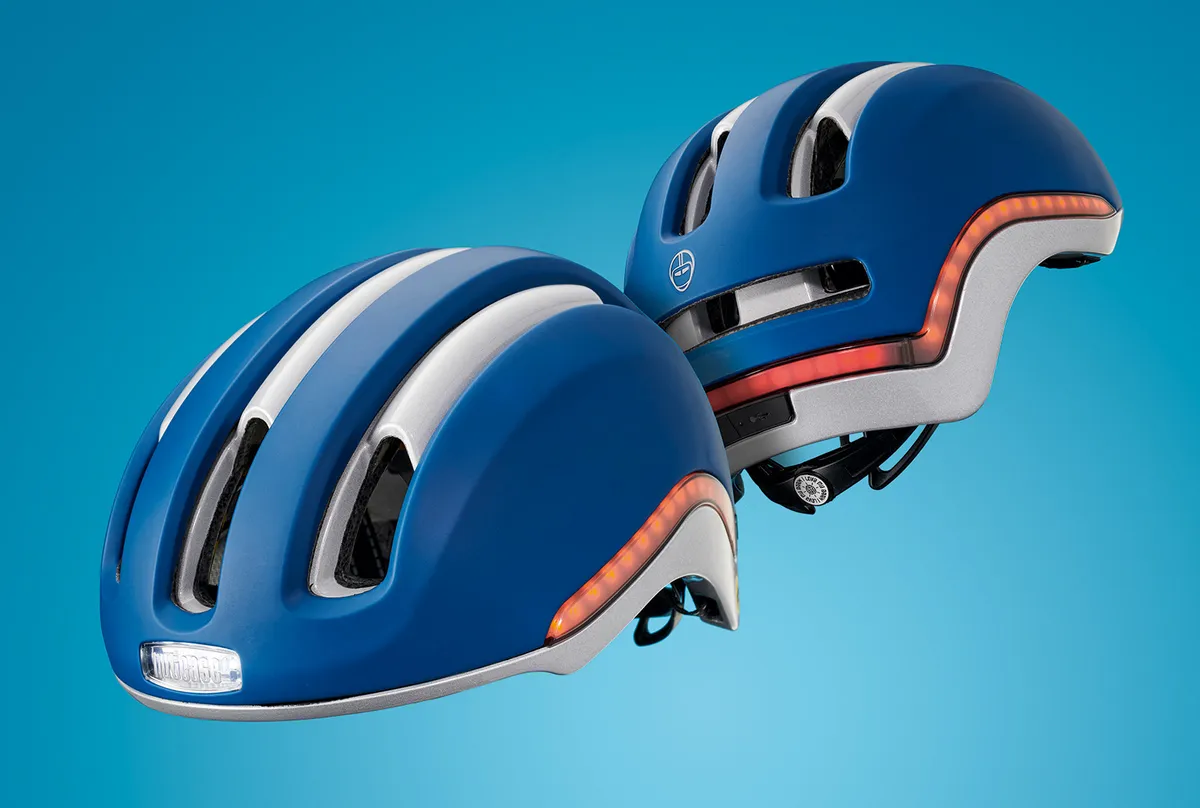
- Price: £125/$150
- Sizes: S/M, L/XL
- Weight: 509g (XL)
- Vents: 3 front to back
- Protection: MIPS
- Colours: Navy; Cabernet Matte; Blanco Gloss; Kit Matte; Rozay Matte; Rozay Matte; Maritime
- Pros: Great fit; MIPS; excellent visibility
- Cons: Price; fiddly charge port cover
The Nutcase Vio is a sharp-looking commuter helmet with impressive safety features, such as rechargeable lighting and MIPS protection.
The front LEDs give 100 metres of visibility, while the rear can be seen from 180m. The battery lasted for 2.5 hours on the brightest setting. It charges in two hours, though the USB port’s rubber cover can be tricky to close up.
Despite generous coverage and ample padding, the Nutcase Vio is ventilated sufficiently for urban riding.
A rear micro-dial and a Fidlock clasp on the straps, which is easy to operate with one hand and closes securely, enhance the Vio's comfortable fit.
At £125/$150 and 509g in size XL, the Nutcase Vio is neither cheap or light. But it is packed with helpful tech.
Oakley ARO3 MIPS
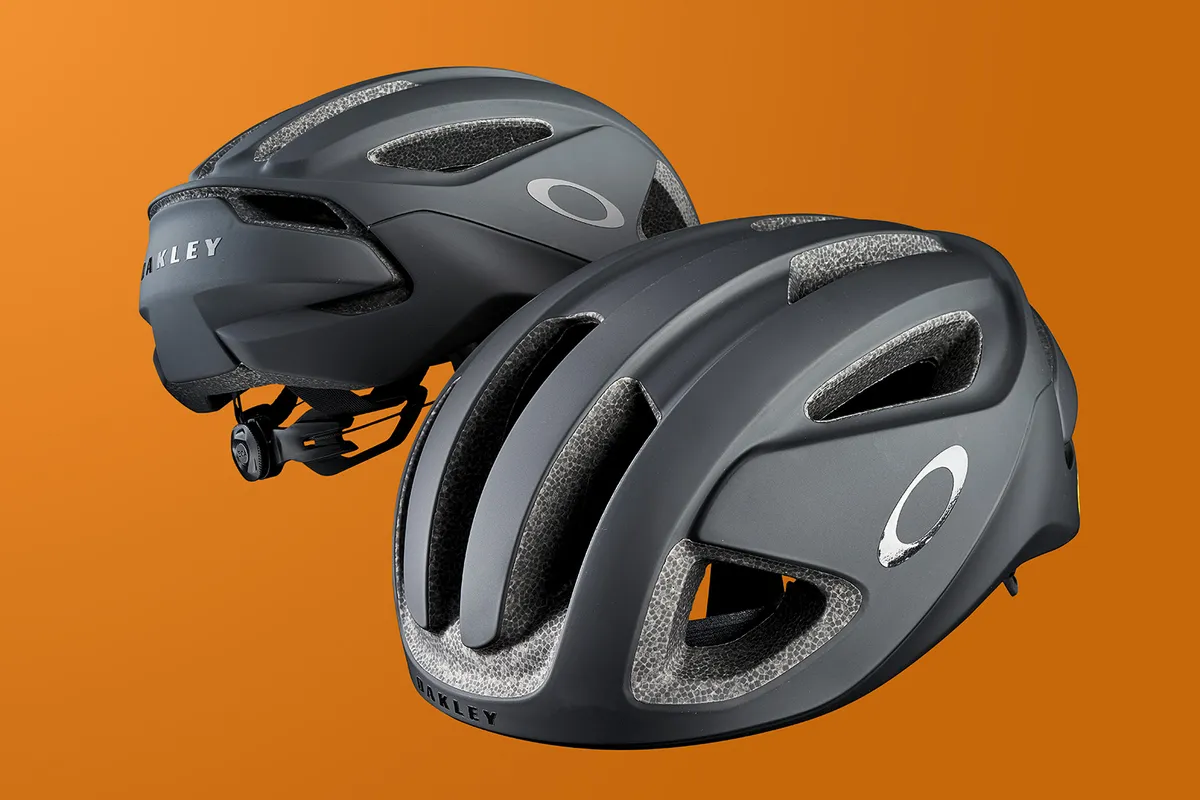
- Price: £153/$185/AU$240
- Sizes: S, M, L
- Weight: 296g (L)
- Vents: 12
- Protection: MIPS
- Colours: Matte White; Bayberry; Black Galaxy; Poseidon Heather; Navy Balsam; Fog Grey; Black and more
- Pros: Bold styling; glasses-friendly design; great ventilation; MIPS
- Cons: Try before you buy, especially if your head is around 60cm
The Oakley ARO3 is pretty light and airy for a commuter helmet equipped with MIPS (the cheaper ARO3 Lite comes without).
The BOA 360-degree fit system tightens evenly all over, ensuring a comfortable and secure fit. The rear dial can be moved vertically into three positions.
The head is well supported at the back of the helmet, where a ponytail could pass through a reasonably large central opening.
The lightweight straps sit flat against your skin and do not rub against your ears.
Bear in mind that the ARO3’s maximum size is 60cm and the shape’s not as round as some other brands. Our tester, whose head is on the cusp of the helmet’s size range, found the shell pressed lightly, but not uncomfortably, on the sides of their crown.
Specialized Tone

- Price: £65/$80/€80/AU$110
- Sizes: S, M, L
- Weight: 352.3g (L)
- Vents: Single full width
- Protection: MIPS
- Colours: Smoke; Birch/Taupe; Deep Marine Metallic; Limestone/Birch; White/Morning Mist
- Pros: MIPS protection and high safety rating; great for cooler days
- Cons: Can get stuffy in the heat; no strap adjustment around your ears
The Specialized Tone has a level of protection rarely seen on commuter helmets at this price. It incorporates a MIPS liner and received five stars in Virginia Tech's helmet safety testing.
The full-coverage helmet's sparse ventilation better suits cold and wet commutes than warmer, longer rides. Visibility could be better however.
Sizing is generous. Although the web straps stay in place, they aren’t adjustable so it’s worth trying before you buy. The Tone’s 352.3g weight for a size Large is good for a shell-style design.
Its minimal but well-placed pads add comfort and dry quickly.
Also consider
The following helmet scored fewer than four stars, but is still worth considering if it meets your riding needs.
HJC Calido Plus
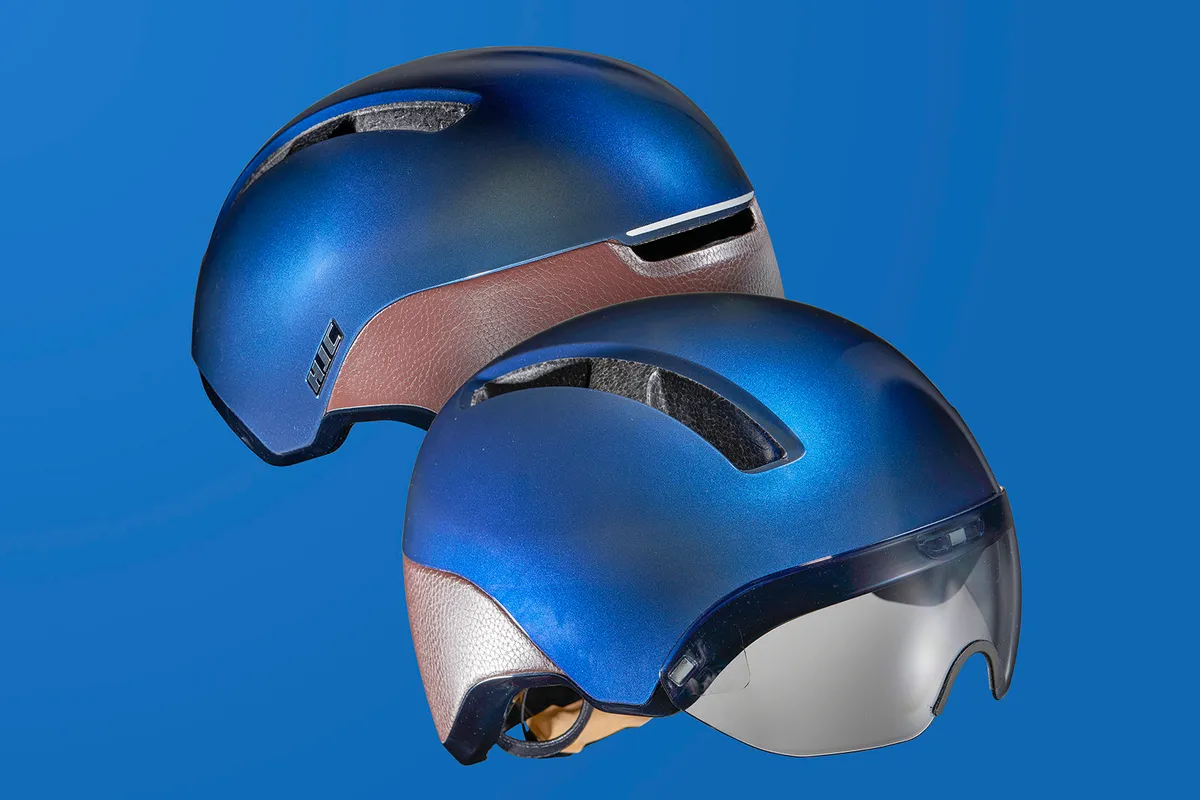
- Price: £165/€189
- Sizes: S, M, L
- Weight: 350g
- Vents: 2 three-quarter length, rear port
- Colours: Metal Black; Pearl Greyish Silver; Metal Navy Brown; Pearl white Grey
- Pros: Superb quality; adjustment-free fit; magnetic visor
- Cons: No MIPS; visor look will divide opinion
The HJC Calido Plus is one of the cooler commuter helmets in terms of style and temperature regulation.
It meets all the safety standards, but doesn’t come with MIPS or any of the other rotational-force safety systems.
The shield visor, leather straps and quality finish hint at the brand's motorcycle heritage. The visor-less version costs half as much.
The generous internal padding is made from a suede-like material, but the helmet remains fairly light.
HJC’s rear cradle is spring loaded and adjusts the fit to your head with no need for a dial.
Buyer’s guide to commuter bike helmets
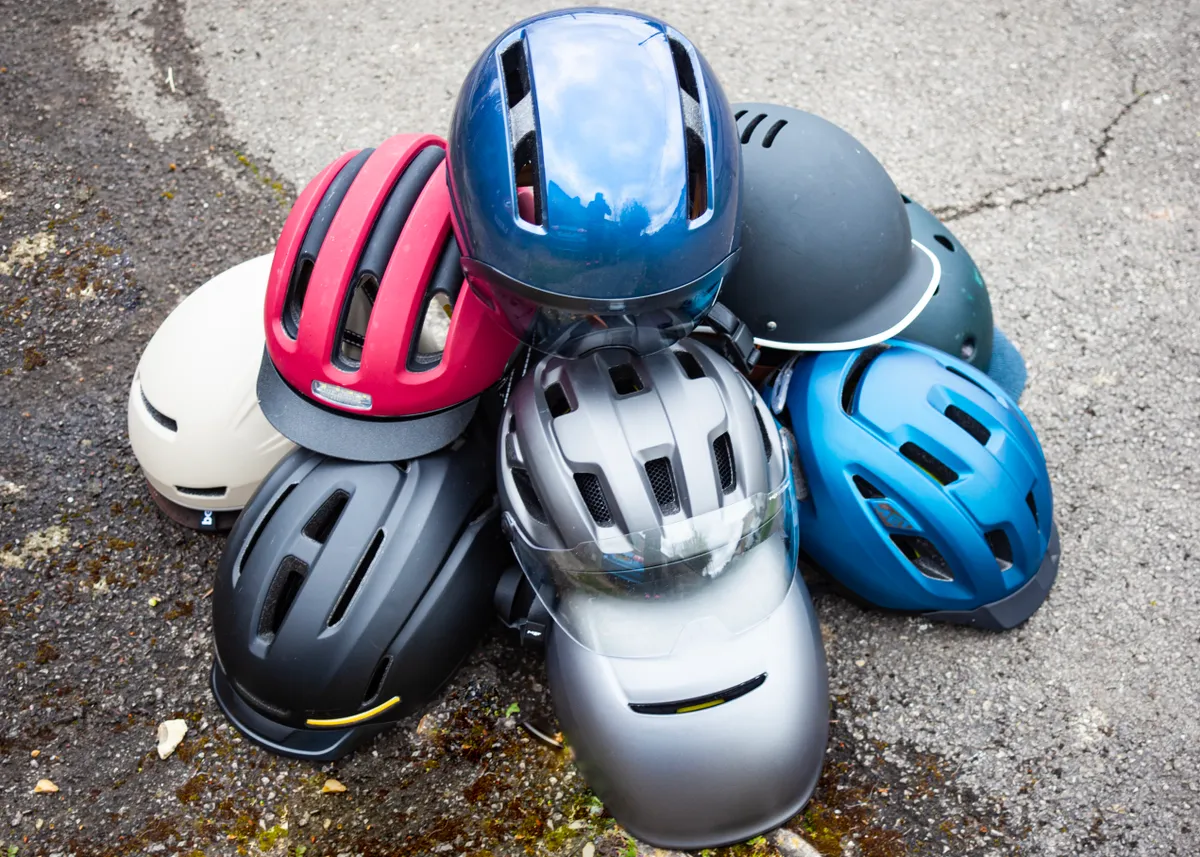
Commuter helmets have a distinctive style that’s a little different from most road bike helmets or mountain bike helmets. What are the features you should look for and how should you look after your urban bike helmet?
Helmet crash safety features

All cycling helmets have to pass a series of safety and impact tests for them to be legally sold in your country. Many will exceed the minimum requirements.
Beyond that, helmet makers often include additional safety features. MIPS is the best known. It incorporates a layer between the helmet shell and your head, which will slide inside the shell in case of an accident. This is claimed to reduce the likelihood of concussion in a glancing impact.
There are other systems besides MIPS that are designed to increase protection, which are used in some urban bike helmets.
Some of Trek's Bontrager-branded cycling helmets use a material called WaveCel, which is designed to crush in the event of an impact. Koroyd is a similar structure used by some brands.
Lazer uses a technology called KinetiCore that adds crumple zones to some of its urban bike helmets.
Other helmet makers rely on their testing protocols to prove a helmet will protect you from an oblique impact. Kask is a prominent proponent of the WG11 test protocol and all its urban helmet designs exceed this standard.
Helmet awareness features
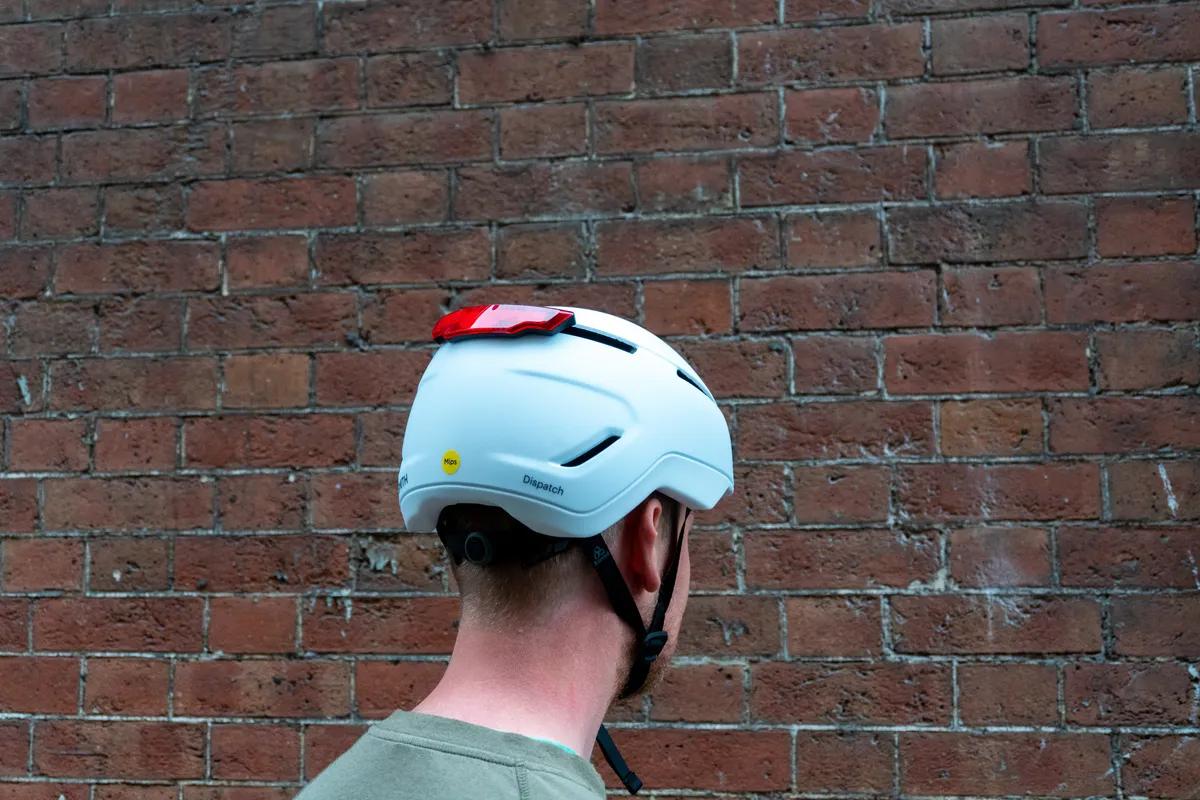
In a complex urban transport environment, being seen by other road users is really important for rider safety.
To that end, many urban bike helmets include in-built lights. Red LED lights at the rear are the most common. They usually have a range of modes, both blinking and constant, and are most commonly powered by a USB-rechargeable battery in the helmet shell, although some use coin cells. Some road helmets enable you to add a small red blinkie to the rear.
Some commuter bike helmet designs also incorporate white LEDs at the front of the helmet and occasionally you’ll find amber lighting at the sides too.
It’s a good idea to augment any lighting in your helmet with lights on your bike, to increase your road presence, even during the day. At night, it’s mandatory to use lights attached to your bike in most jurisdictions.
Will my head feel hot?

Most commuter bike helmets have the “bowling ball” skate-style design, which is fairly enclosed relative to the best road bike helmets and they tend to sit lower at the back of the head. That’s not necessarily a bad thing, depending on how hard you are riding and how far.
If your ride to work is reasonably short, there are plenty of stops and starts and you’re going at a slower pace on a commuter bike, you may not have time to get hot, particularly if you’re commuting through the winter.
In wet weather, the extra cover will keep you drier too. Many urban bike helmets will include a peak, which may be removeable, to help keep rain out of your eyes.
Some cycle helmets are designed specifically to offer protection at the higher speeds that an electric bike can typically achieve.
Things might get uncomfortable in hot weather, although commuter helmets are designed to channel airflow over the crown of your head to help keep you cooler. In such conditions and for training on your commute, a more open road bike helmet or mountain bike helmet will be preferable.
The best budget bike helmets with a more open, vented design are inexpensive and have many of the features of higher priced models, often including MIPS, just with a less complex design. They may weigh a little more too.
How do I find the right fit?
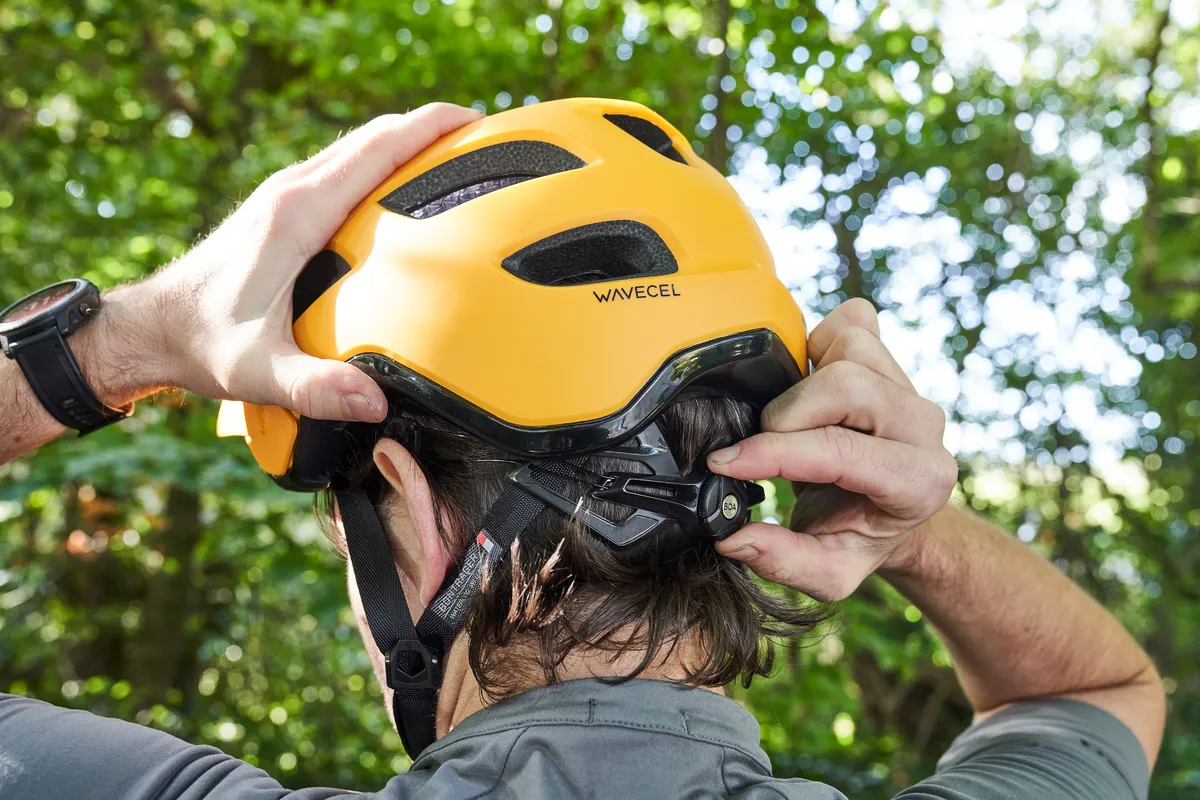
Adult lids are usually sold in three helmet sizes, designated small, medium and large, although some commuter bike helmets come in fewer sizes. These sizes cover a range of head sizes that the helmet is designed to fit, which is the head circumference measured horizontally just above the eyebrows.
The range of head circumferences covered by a helmet size will be shown on the helmet, its packaging and the manufacturer’s website.
The first step is to measure your head size, if you don’t know it, to determine which size urban helmet you need. Either use a soft tape measure or a length of string.
It’s well worth trying before you buy, because all helmets are shaped slightly differently, so you may find that one helmet of the correct size fits your head shape better than another. To find the perfect fit, it's also crucial to know how to wear a bike helmet.
All cycling helmets have a degree of adjustability. You can usually move the rear cradle up and down, so that it sits comfortably below your occipital bone (the bump at the back of your skull).
The circumference of the cradle can then be adjusted so that the helmet fits snugly around your head. This is usually by means of a dial adjuster at the rear of the helmet.
When do I need to replace my commuter helmet?

Helmets are delicate and any helmet that has been involved in a crash should be replaced. Even if damage appears cosmetic or is not visible, the helmet structure may have been compromised, so it may not protect you in a subsequent accident.
Many helmet makers will offer you a crash-replacement discount, although this is usually only for a limited period of a few years.
If your helmet has been dropped or crushed, it may have been damaged, so again it’s sensible to replace it to ensure protection.
Urban helmets tend to have more durable shells than road bike helmets though. This makes them a little heavier but means they can better at withstanding scuffs.
Helmets will deteriorate over time as the materials age. This may be accelerated by sunlight, heat and sudden temperature changes, so try to keep your helmet away from windows and don’t leave it in a hot car or other hot place during summer.
Kask, as one example, recommends replacing your helmet three years after you bought it.
